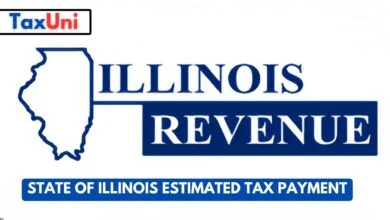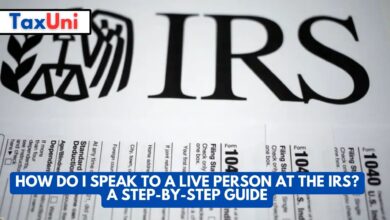Tax Filing Process: A Comprehensive Guide to Tax Filing
Tax filing refers to the process of submitting your tax return to the appropriate government agency, usually the Internal Revenue Service (IRS) in the United States.

Contents
- What to Consider Before Filing Taxes?
- Factors that May Affect Your Taxation
- Step-By-Step Tax Filing Process
- How to Keep Records of My Taxes?
- Using Tax Softwares
- What Happens If I Fail to File My Taxes?
- FAQs
- When is the tax filing deadline?
- What happens if I miss the tax filing deadline?
- How do I file my taxes?
- Who must file taxes?
- What is the difference between a tax deduction and a tax credit?
- What is the IRS Tax Code?
- What is an audit?
- What should I do if I receive a notice from the IRS?
- What is a W-2 form?
- What is a 1099 form?
- What is a tax bracket?
- Can I deduct charitable donations from my taxes?
- Can I deduct business expenses from my taxes?
- What is the difference between a dependent and an exemption?
- What is the difference between a standard deduction and itemized deductions?
- How can I get help with my taxes?
- What is Form 1040?
Tax is a mandatory financial charge that is imposed by a government on individuals or entities, such as businesses, based on their income or property. Governments collect taxes to fund public services like infrastructure, education, and public safety. The amount of tax you owe is generally based on your taxable income, which is the amount of money you earned during the tax year that is subject to taxation. There are different types of taxes, including income, sales, property, and excise.
The tax laws and regulations can be complex, and it’s important to understand your tax obligations and file your taxes accurately and on time to avoid penalties or interest charges. The Internal Revenue Service (IRS) requires taxpayers to file a federal income tax return if their income exceeds a certain threshold, but other factors may also require you to file taxes. Here are some of the factors that may require you to file taxes:
What to Consider Before Filing Taxes?
Filing your taxes can be daunting, but the process can be smoother and less stressful with a little preparation and planning. Here are some important factors to consider before filing your taxes:
- Gather all necessary documents and information.
Before you start filling out your tax forms, ensure you have all the necessary documents and information. This may include your W-2 form from your employer, 1099 forms from banks and investment companies, receipts for deductible expenses, and any other relevant tax documents.
- Understand your filing status.
Your filing status determines your tax rate and eligibility for certain deductions and credits. Make sure you understand your filing status, which may be single, married filing jointly, married filing separately, head of household, or qualifying widow(er) with a dependent child.
- Determine your deductions and credits.
Deductions and credits can lower your tax liability and increase your refund. Common deductions include expenses related to homeownership, education, and charitable donations. Credits can include the earned income tax credit, child tax credit, and education credits.
- Know the tax deadlines.
The tax deadline is typically April 15th, but it can vary depending on the year and your state of residence. If you need more time to file, you can request an extension, but be aware that this only extends the filing deadline, not the deadline for paying any taxes owed.
- Consider using tax software or hiring a professional
Tax software can help simplify the tax filing process and ensure accuracy. It may be worth hiring a professional tax preparer if your tax situation is more complex, such as owning a business or having investments.
- Double-check your return before submitting it.
Before submitting your tax return, double-check all your information and calculations for accuracy. Errors or omissions could result in penalties or delays in receiving your refund.
Considering these factors before filing your taxes ensures the process goes smoothly and maximizes your deductions and credits.

Factors that May Affect Your Taxation
- Income: If your gross income exceeds the filing threshold for your filing status, you are required to file a tax return. The income threshold varies based on your filing status, age, and other factors.
- Self-Employment: If you are self-employed and your net earnings from self-employment are $400 or more, you are required to file a tax return.
- Social Security Benefits: If you received Social Security benefits during the year and your total income exceeds a certain threshold, you may be required to file a tax return.
- Unemployment Benefits: If you received unemployment benefits during the year, you may be required to file a tax return if your total income exceeds a certain threshold.
- Investment Income: If you received interest, dividends, or capital gains from investments, you may be required to file a tax return if your total income exceeds a certain threshold.
- Foreign Income: If you are a U.S. citizen or resident alien living and working abroad, you may be required to file a tax return if your income exceeds a certain threshold.
- Health Care Coverage: If you did not have health care coverage for the entire year and did not qualify for an exemption, you may be required to pay the penalty and file a tax return.
Step-By-Step Tax Filing Process
Tax filing can seem like a daunting task, but it doesn’t have to be. Here is a step-by-step guide to help you navigate the tax filing process:
Step 1: Gather your documents. Before you begin filing your taxes, you’ll need to gather all of the necessary documents. This includes your W-2, 1099 forms, deductible expense receipts, and other relevant documents. If you’re self-employed, you’ll also need to gather information on your business income and expenses.
Step 2: Determine your filing status. Your filing status is based on your marital status and family situation. You can file jointly as single, married filing, married filing separately, head of household, or qualifying widow(er) with a dependent child. Your filing status will determine your tax rates, deductions, and credits.
Step 3: Calculate your taxable income. Your taxable income is your total income minus any deductions and exemptions. You can use tax software or a tax professional to help you calculate your taxable income.
Step 4: Choose your method of filing. You can file your taxes electronically or by mail. Electronic filing is faster, more secure, and can help you get your refund more quickly. If you’re filing by mail, include all the necessary forms and documents and send them to the appropriate IRS address.
Step 5: Complete your tax return. Your tax return will include income, deductions, and credits information. You can use tax software or a tax professional to help you complete your tax return. Make sure to double-check your return for accuracy before filing.
Step 6: Pay any taxes owed. If you owe taxes, you can pay them online, by mail, or by phone. Make sure to pay by the tax deadline to avoid penalties and interest.
Step 7: Submit your tax return. If you’re filing electronically, you can submit your tax return directly through tax software or a tax professional. If you’re filing by mail, include all the necessary forms and documents and send them to the appropriate IRS address.

How to Keep Records of My Taxes?
Keeping good records of your taxes is important for several reasons, including ensuring that you are claiming all of the deductions and credits you are entitled to and being able to defend your tax return in case of an audit. Here are some tips on how to keep records of your taxes:
- Keep all documents related to your income, such as W-2s, 1099s, and statements from investments.
- Keep records of all deductible expenses, including receipts for charitable donations, medical expenses, and business expenses.
- Keep records of all taxes paid, including property, state and local income, and sales taxes.
- Keep records of any estimated tax payments you made throughout the year.
- Keep copies of all tax returns, supporting documents, and any correspondence with the IRS.
- Store your records in a safe and organized manner, such as in a filing cabinet or on a computer.
- Keep your records for at least three years from the date you filed your tax return, or the date the tax was due, whichever is later. Some records, such as records related to property or investments, should be kept longer.
- Consider using tax software or a tax professional to help you organize your records and prepare your tax return.
By keeping good records of your taxes, you can make the tax filing process easier and more accurate. It’s also important to note that keeping accurate records can help protect you in case of an audit or other tax-related issues.

Using Tax Softwares
Using tax filing software can make the tax filing process easier and more accurate. Here are some general steps to follow when using tax filing software:
- Many tax filing software options are available, both free and paid. Research and compare different options to find the one that best fits your needs.
- Before using the software, ensure you have all the necessary tax documents, such as W-2s, 1099s, and receipts for deductible expenses.
- Once you have chosen software, create an account with your personal information.
- The software will guide you through entering your tax information, such as your income, deductions, and credits. You may be able to import some information directly from your tax documents.
- Before submitting your return, carefully review all the information you entered for accuracy and completeness. Most tax filing software will have a feature to check for errors or missing information.
- Once you are satisfied that your return is accurate, submit it through the software. You may need to pay any taxes owed or choose a payment plan if you cannot pay the full amount.
- Be sure to save a copy of your tax return and all supporting documents for your records.
- Some tax filing software may have additional features like live support or assistance with deductions and credits. Take advantage of these features if you need them. Additionally, consulting with a tax professional may be beneficial before filing your return if you have a complex tax situation.
What Happens If I Fail to File My Taxes?
If you fail to file your taxes on time, you may face penalties and interest charges from the IRS. The penalties and interest will depend on how late you file and whether you owe taxes.
Here are some of the consequences of failing to file your taxes on time:
- Penalties: If you fail to file your tax return by the due date (usually April 15), you may face a failure-to-file penalty. The penalty is usually 5% of the unpaid taxes for each month or part of a month that your return is late, up to a maximum of 25% of the unpaid taxes.
- Interest: If you owe taxes and don’t pay them by the due date, you will be charged interest on the unpaid amount. The interest rate is determined quarterly and is based on the federal short-term rate plus 3%.
- Loss of refunds: If you are owed a refund and fail to file your tax return, you may lose your refund. There is a three-year window to claim a refund, so if you wait too long to file, you may forfeit any money owed to you.
- Legal action: In extreme cases, the IRS may take legal action against you for failing to file your taxes. This can include wage garnishment, asset seizure, and even criminal charges.
It’s important to file your taxes on time even if you can’t pay the full amount owed. You can still file your return and work out a payment plan with the IRS to avoid penalties and interest charges.

FAQs
When is the tax filing deadline?
The tax filing deadline in the United States is usually April 15th for most taxpayers. However, the deadline may be extended in certain circumstances, such as when April 15th falls on a weekend or holiday.
What happens if I miss the tax filing deadline?
You may be subject to penalties and interest charges if you miss the tax filing deadline. The penalty for filing late is usually 5% of the tax owed for each month or part of a month that the return is late, up to a maximum of 25%. You may also be charged interest on any unpaid taxes.
How do I file my taxes?
You can file your taxes either by mail or electronically. Many people choose to use tax preparation software to help them prepare and file their taxes.
Who must file taxes?
The requirement to file taxes depends on your income, filing status, and other factors. In general, you must file a tax return if your income is above a certain threshold, which varies depending on your filing status and age.
What is the difference between a tax deduction and a tax credit?
A tax deduction reduces your taxable income, which in turn reduces the amount of tax you owe. A tax credit, on the other hand, reduces the amount of tax you owe directly. For example, a $1,000 tax deduction would reduce your taxable income by $1,000, while a $1,000 tax credit would reduce your tax bill by $1,000.
What is the IRS Tax Code?
The IRS Tax Code refers to the body of laws and regulations that govern the collection of taxes in the United States. The Tax Code is complex and can be difficult to understand, which is why many people choose to use tax preparation software or seek the help of a tax professional when filing their taxes.
What is an audit?
An audit is a review of your tax return by the IRS to ensure that you have reported your income and deductions accurately and paid the correct amount of tax. Audits can be conducted by mail, in person, or by telephone and may be random or triggered by certain red flags on your return.
What should I do if I receive a notice from the IRS?
If you receive a notice from the IRS, read it carefully and follow the instructions. The notice may be a simple request for additional information or indicate that you are being audited or owe additional taxes. If you are unsure about how to respond to the notice, seek the advice of a tax professional.
What is a W-2 form?
A W-2 form is a document that reports your wages, salary, and other compensation from an employer. Your employer is required to provide you with a W-2 form each year, which you must use to file your taxes.
What is a 1099 form?
A 1099 form is a document that reports income other than wages, salary, and tips. For example, if you are self-employed or earn income from investments, you may receive a 1099 form.
What is a tax bracket?
A tax bracket is a range of income levels that are subject to a specific tax rate. The United States has a progressive tax system, which means that as your income increases, so does your tax rate.
Can I deduct charitable donations from my taxes?
Yes, charitable donations may be deductible on your tax return, subject to certain limitations. To qualify for a deduction, you must donate to a qualified charitable organization and keep records of your donation.
Can I deduct business expenses from my taxes?
Yes, if you are self-employed or own a business, you may be able to deduct certain business expenses from your taxes. The expenses must be ordinary and necessary for your business to qualify for a deduction.
What is the difference between a dependent and an exemption?
A dependent is a person who relies on you for financial support, such as a child or a relative. An exemption is a deduction that reduces your taxable income, which can include exemptions for yourself, your spouse, and your dependents.
What is the difference between a standard deduction and itemized deductions?
The standard deduction is a fixed amount that you can deduct from your taxable income, regardless of your actual expenses. On the other hand, itemized deductions allow you to deduct specific expenses, such as medical expenses, state and local taxes, and mortgage interest.
How can I get help with my taxes?
There are several resources available to help you with your taxes, including tax preparation software, tax professionals, and IRS publications and forms. The IRS also offers free tax preparation assistance to eligible taxpayers through the Volunteer Income Tax Assistance (VITA) and Tax Counseling for the Elderly (TCE) programs.
What is Form 1040?
Form 1040 is the standard individual income tax return form used in the United States. It is used to report your annual income to the IRS and calculate your tax liability or refund. The form is used by taxpayers who have income from wages, salaries, tips, self-employment, investments, and other sources. The form also allows you to claim certain deductions and credits that can lower your tax bill or increase your refund.
There are three different versions of Form 1040: Form 1040, Form 1040A, and Form 1040EZ. The form you use depends on your individual tax situation and whether you are eligible for certain deductions or credits. The IRS provides instructions with each form to help taxpayers complete their returns accurately.





